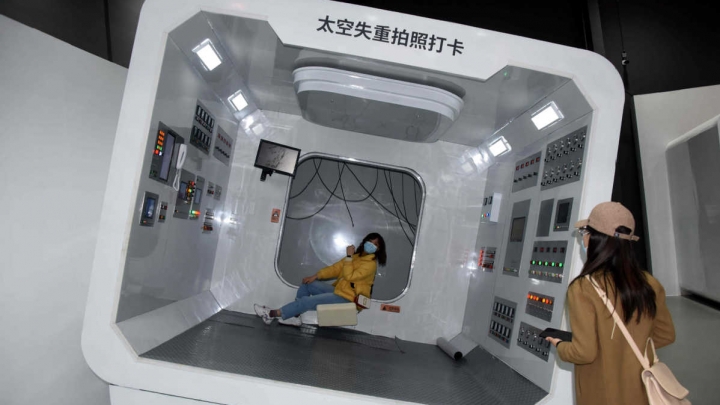An interactive exhibition on the development of China’s manned space program recently opened in Beijing. The exhibition, held at the China Science and Technology Museum, is named Fly to Space and is jointly hosted by the China Science and Technology Study Association and the Manned Space Program Agency.
The exhibition aims to celebrate the centenary of the founding of the Communist Party of China, while at the same time inspiring the Chinese public to travel to space, according to a representative of the museum.
The gallery, for example, displays the work of astronauts as well as thematic exhibits about time tunneling and life in space.
Interactive technologies, including virtual reality and 3D screens, allow visitors to see the current state of development of China’s manned space program, experience the process of selecting and training astronauts, and learn about spaceship launch and daily life in orbit to learn simulations.
At the opening of the interactive exhibition, Yin Hao, director of the Science and Technology Museum, said that the rapid development of China has made people want to know more about science and high technology. The exhibition focuses on promoting scientific and technological innovations in manned spaceflight while promoting scientific spirit.
“All sectors of society should participate in spreading science, especially in the science and technology sectors,” Yin said.
Yang Liwei, the first Chinese to fly into space and deputy chief designer of China’s manned space program, said every step in space exploration will contribute to the scientific and technological development of China and promote the innovative achievements of all humankind.
Eighteen years ago, Yang Liwei, the first Chinese astronaut – took off on a Chinese spaceship called Shenzhou 5. The Shenzhou 5 mission on October 15, 2003 took about 21 hours, during which Yang Liwei orbited the Earth 14 times.
When asked about popularizing the natural sciences, Yang Liwei said it would encourage all parts of society to contribute to the implementation of an innovation-driven development strategy.
Chi Faren, chief designer of the first manned Chinese spacecraft, Shenzhou, said that the ongoing interactive exhibition not only teaches young people about space, but also encourages scientific exploration and curiosity, which will contribute to the revival of the Chinese nation.

“Certified gamer. Problem solver. Internet enthusiast. Twitter scholar. Infuriatingly humble alcohol geek. Tv guru.”






